Japanese style bedroom
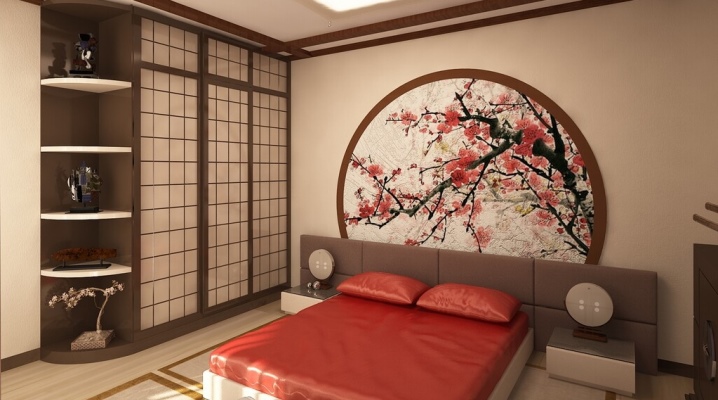
Decorating a room beautifully is not an easy task. It is necessary to choose the right furniture, accessories, decor, consider different finishing options. All this should be beautifully combined with each other, and the room itself should be functional, comfortable and aesthetically attractive. An even more difficult option is to equip the interior in accordance with the principles of a certain stylistic direction. Today there are many of them, for different tastes.
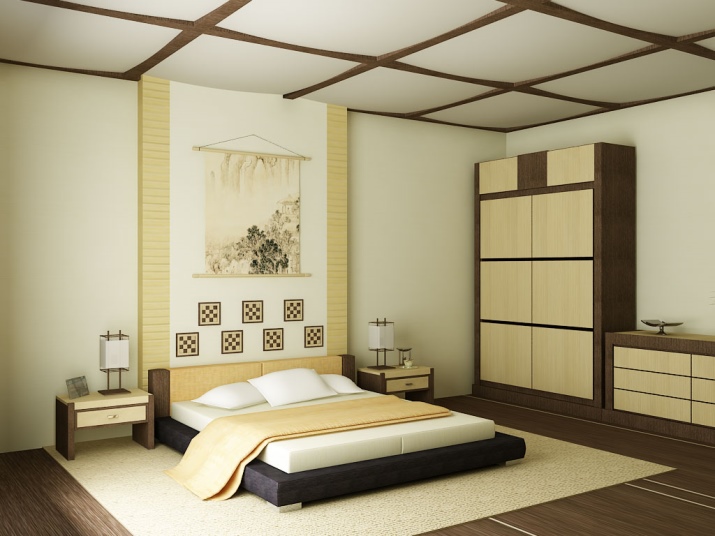
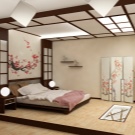
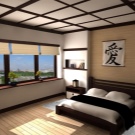

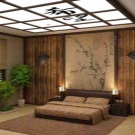
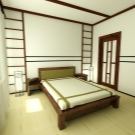
Oriental themes, especially the Japanese style, always seem to be something mysterious, sublime, sophisticated. This direction is the best suited for bedroom decoration.
Features of the Asian style
It is possible to briefly outline the main criteria of the Japanese style in almost two words - tradition and minimalism. The laconic design and the absence of lush decorative additions can be easily explained: Japan is a very small and densely populated country. This could not but leave its mark on the formation of the traditional oriental style in the design of the premises. This style is perfect for small apartments, such as "Khrushchev".
A Japanese-style bedroom is designed taking into account the following principles:
- Minimalism. Free space, devoid of a large number of decorative ornaments and accessories, allows you to create the most optimal conditions for relaxation and recreation after a hard day's work.
- Naturalness. The closeness of man to nature is emphasized in every possible way with the help of natural materials used in decoration and interior design (wood, natural silk, bamboo, linen, cotton). The color scheme should also be close to natural (brown, green, dark red).
- Functionality. The competent arrangement of pieces of furniture, shelves, cabinets allows you to perfectly place all the necessary things and at the same time save a lot of free space.
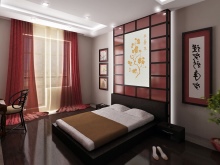
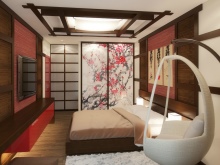
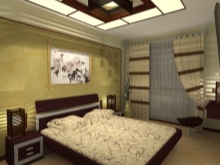
The Japanese style in design is most suitable for people who are tired of the hectic life in a metropolis and strive for natural beauty and solitude. This style in the interior of the bedroom is also recommended for connoisseurs of laconic, simple design solutions.
DIY room decoration options
Traditional Japanese dwellings are very different from European dwellings. There are no heavy and massive walls. Zoning of the premises is carried out using mobile partitions-screens made of thin rice paper. Today, such screens can be used to decorate a bedroom in an oriental style or to divide a room into several separate corners, for example, for reading or sleeping.
For the decoration of the walls, materials are used, sustained in a light, dull color scheme. It can be:
- wallpaper, for example, bamboo or textile. There may be a paper version, decorated with Japanese characters or traditional ornaments (sakura, cranes, fans);
- wooden panels (this design is very similar to traditional Japanese sliding partitions);
- textile;
- dye (the painted walls can remain solid or they can be decorated with a stencil pattern).
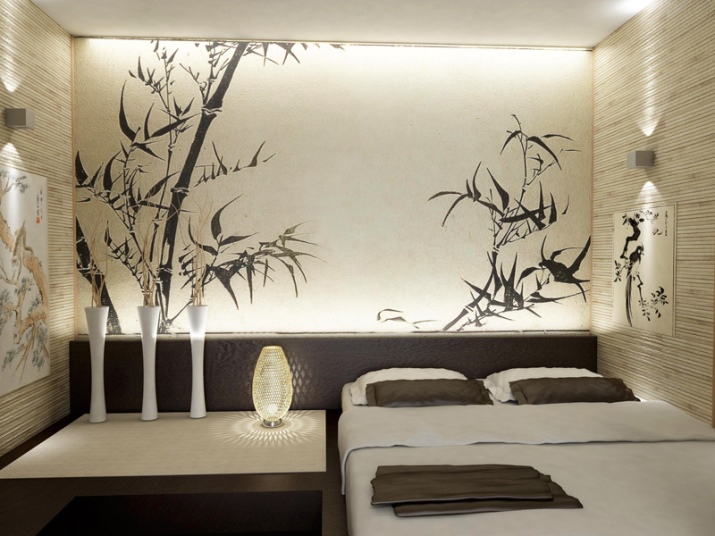
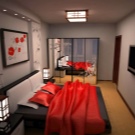
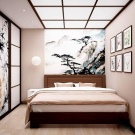
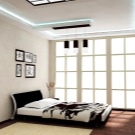
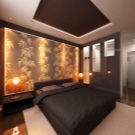
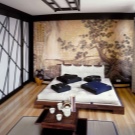
When decorating the ceiling, it is recommended to follow the following tips:
- Traditional Japanese architecture implies the shape of the ceiling in the form of a square or rectangle. (the same applies to the elements that complement and decorate the ceiling covering).
- Materials can be of both synthetic and natural origin. The second option (wood, fabric) is, of course, preferable.
- Bright hues. Ceiling and wall coverings can be made in an identical color scheme, close to natural. Light, restrained ornaments can be used to decorate the ceiling.

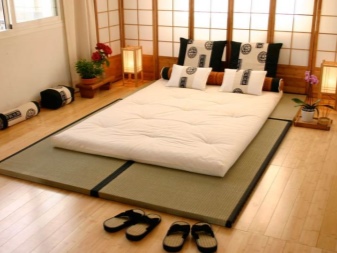
The following are used as ceiling coverings:
- beams (the ceiling is divided into regular rectangles using beams). They are simply attached to the painted ceiling or additionally tightened with paper and cloth;
- stretch ceiling (can be glossy or matte, plain or decorated with a delicate, discreet pattern);
- suspended ceiling (ideal if the ceiling profile is in a contrasting color to the tiles).
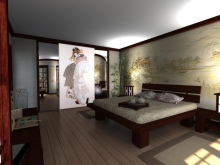

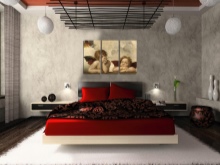
The arrangement and decoration of the floor in Japan is given a very serious and important importance. One of the traditions of this country is walking barefoot, especially when it comes to the bedroom. The ideal option is a natural wood covering (parquet, laminate). On top, you can add a bamboo mat, rattan cloth, or matting. The disadvantage of these natural materials can be rather quick wear, so instead of them it is quite possible to use a bedside rug decorated with oriental ornaments.
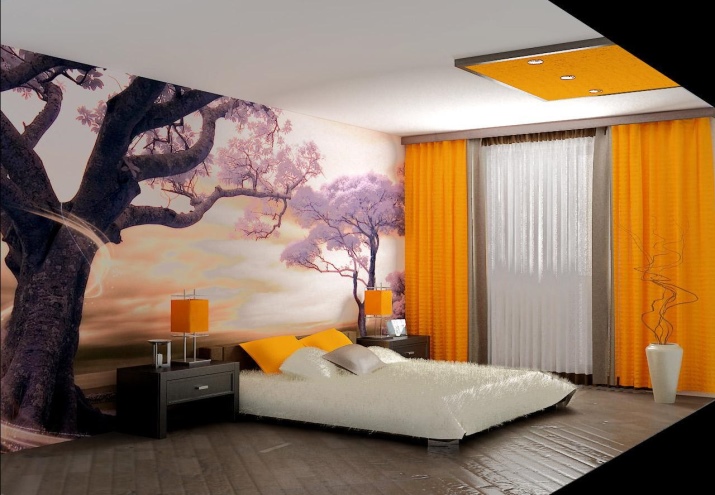
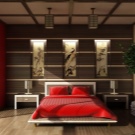

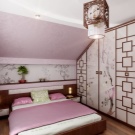
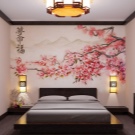
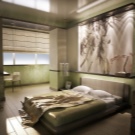
The windows in the Japanese-style bedroom can be decorated with fabric blinds or light curtains made of linen, cotton or bamboo straw. They should be decorated with national oriental ornaments.
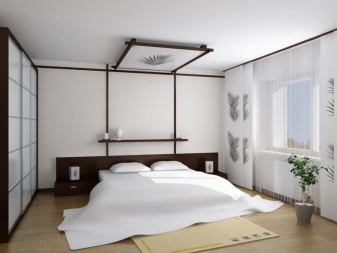
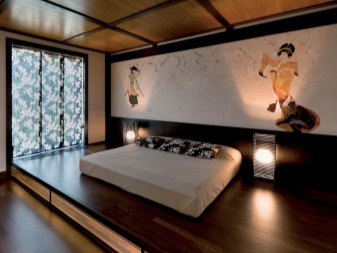
Color spectrum
Eastern style implies the maximum approximation of a person to their natural habitat. Therefore, the color scheme for decorating walls, ceilings, floors, decorations, accessories and furniture should be kept in such shades. These are the colors of the earth, plants, air, stone. A neutral palette can be diluted with brighter, contrasting inclusions. It can be textiles, a lamp, a screen, or any other element of the interior.
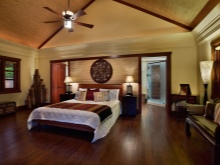
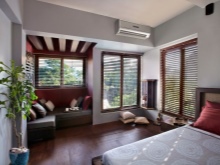
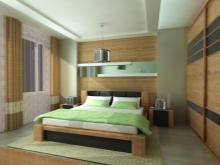
As the main background for decorating walls, you can use different shades of milky, sand, beige, cream. The contours of black, burgundy, brown will help to more clearly define the boundaries of the walls. It is recommended not to use accessories, jewelry and textiles of poisonous, saturated colors.
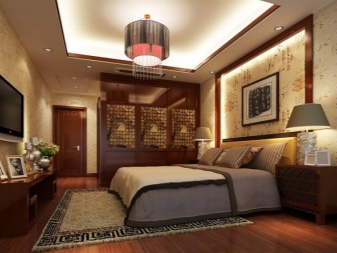

Choosing and installing furniture
An interior designed in oriental style implies the use of one main accent in the room, without scattering attention to several smaller elements. In the bedroom, such an accent is a bed or sofa. Traditional sleeping furniture should be low in height. A wide mattress should sit on the podium or rest on small legs. There should be no lush headboards, walls and armrests.
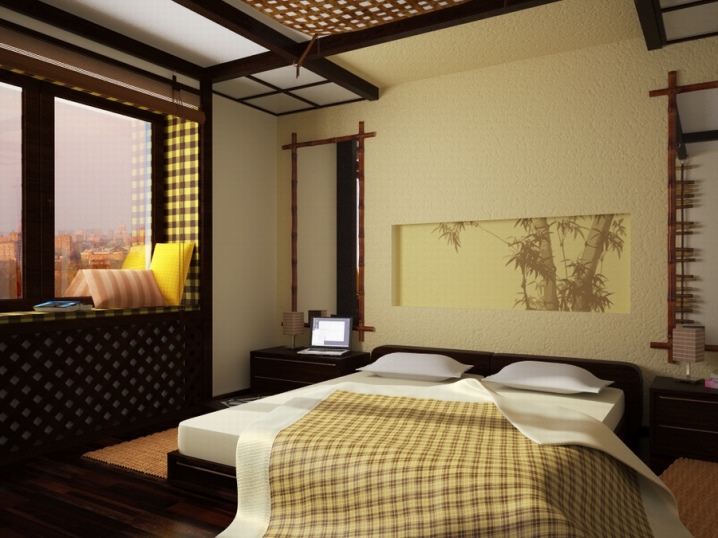
Nearby you can place a bedside table for tea drinking and a small bedside table. It is best not to use bulky cabinets and shelves. Wardrobes or built-in lockers / niches are useful for storing things.

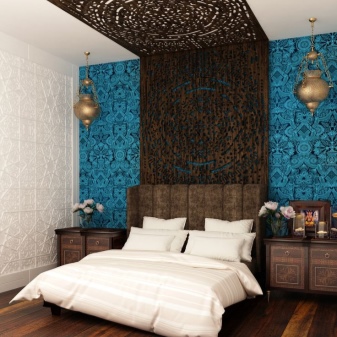
For the manufacture of furniture, lightweight durable materials of natural origin (wood and bamboo) are used. Cotton or natural silk can be used for upholstery.
Lighting
The bedroom should be well lit. During the day - with the help of natural light, in the evening stylized lamps will come to the rescue. In this case, the lighting should be sufficient, but not intrusive, but muffled and diffused. To do this, you can use paper or textile lampshades, matte lamps, special light diffusers.
As for specific light sources, these are, most often, not floor or table models. Ceiling lights emit very soft, dim lighting without abrupt transitions from light to shadow. You can use spotlights or LED strips around the perimeter of the room.
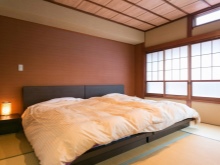
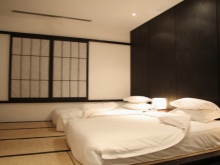
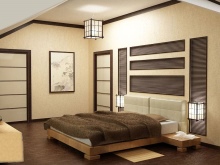
Japanese luminaires are usually made in clear, simple shapes and are painted in black, white, brown, or yellow.Lanterns can be paper, bamboo, textile, glass.

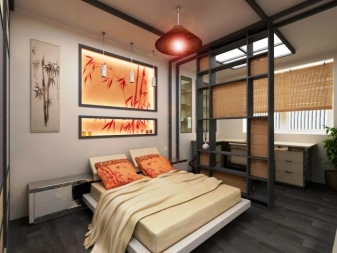
Decor
Since the main idea that runs through everything related to the oriental style is minimalism, then there should be few accessories and decorations in the interior. Nevertheless, they are necessarily present. Therefore, their choice must be approached especially carefully. Each of them should add expressiveness and sophistication to the interior.
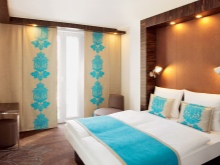

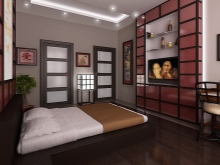
Open shelves or tables can be decorated with porcelain plates with dried rose petals or other flowers. These can be scented candles or porcelain figurines.
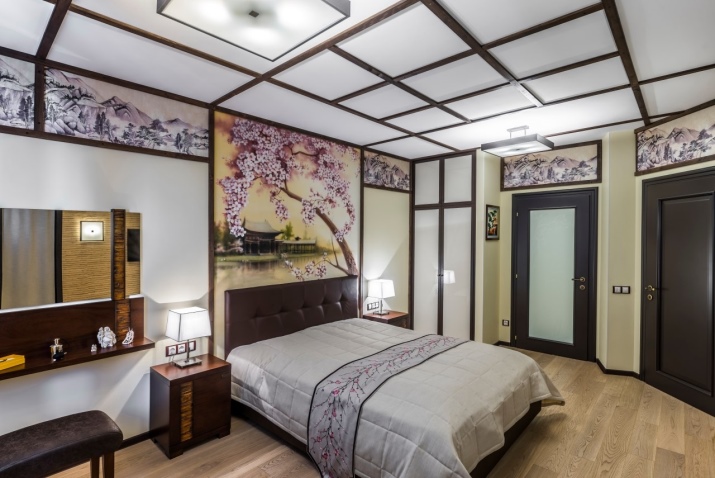
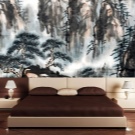
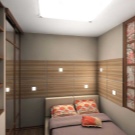
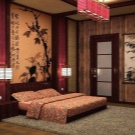
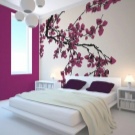
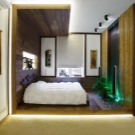
A beautifully shaped floor vase can be placed next to the bed. Floral arrangements and plants occupy a special place in the interior. This can be a traditional ikebana, dwarf pine, tangerine or other tree.
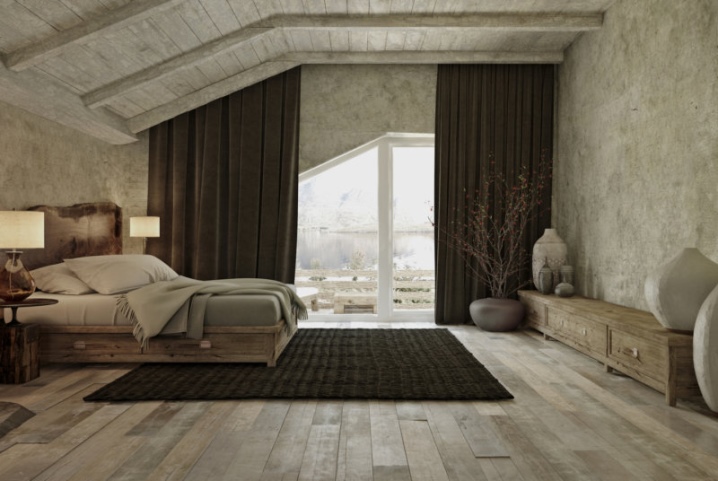
Other jewelry and accessories you can use:
- Tatami instead of a bedside rug;
- Stylized underwear with cranes or cherry blossoms;
- A sliding screen decorated with traditional Japanese ornaments;
- Japanese lanterns on the bedside table;
- Graceful netsuke, arranged in open shelves;
- Japanese dolls and figurines.
- Samurai swords and huge fans hung on the walls.

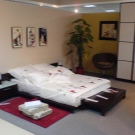
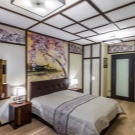

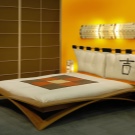
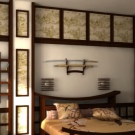













The comment was sent successfully.